Steve Ballmer's Microsoft -- though notorious for staging awful press conferences and media events -- did well with its Surface unveiling Monday night. The device has generated excitement on the Internet, and for good reason: It looks carefully built with an attractive design, has a slim, ingenious fold-out keyboard, and has Windows 8, a butter-smooth tablet operating system.
The sleek presentation, the pre-event secrecy and the impressive product itself launched Microsoft and its Surface to the top of Reddit, and Twitter trends, and the YouTube charts. But for many, including myself, there is a lingering disappointment, a sense that Microsoft could have provided additional information that would have made its Surface event more complete, more satisfying.
Here are the additional details that Microsoft should have unveiled:
Price: Much of the excitement behind the Surface is purely hypothetical at this point, as we don't know the price of either the Surface RT or the Surface for Windows 8 Pro. A Microsoft rep has said that the Surface RT (that's the version that will run only the Metro user interface of the dual-mode Windows 8) will be competitively priced with comparable tablets, and that the Windows 8 Pro Surface (with both Metro and desktop mode) will be competitively priced with Ultrabooks.
Most people take this to mean that Surface RT will cost about $500, or as much as the cheapest iPad, and that the Windows 8 Pro Surface will cost somewhere between $800 and $1,100. Each Surface, of course, gets less attractive as the price rises, and projecting excitement on a device without a price is a dangerous game. How enticing is the Surface RT, for example, at $600? $700? The lack of pricing is cause for some concern; then again, if Microsoft prices the Surface at $299, we can dance in the streets, can't we?
Release Date: The worst thing about not providing any kind of release date or pricing information after the event? Microsoft missed out on tons of Surface orders it likely would have gotten from consumers on the temporary post-announcement high, those who drank the Kool-Aid and were ready to throw wads of money at their computer monitors in order to be one of the first to try the Surface. Not only do you lose all of your momentum coming out of a whiz-bang showing, you also allow competitors -- Google, Apple, etc. -- to convince consumers that their tablet is better. You're giving time for every potential buyer to consider the flaws of your product, and the pros of others.
Alternate Retail Stores: After some prodding, Microsoft announced that the Surface tablet will be available only online or at Microsoft retail stores, of which there are about 20 in the country (and none in New York City, Chicago or Philadelphia -- three of the largest cities by population in the U.S.). Unless Microsoft is committed to selling the Surface primarily to businesses -- or if, as Ashlee Vance writes in BusinessWeek, Microsoft isn't jumping into the hardware-making pool with both feet -- this seems to be a mistake. How many customers will buy a new tablet, made by Microsoft, online without even trying it? How many will travel to one of the far-flung Microsoft stores for it?
4G-Capable? Battery Life?: That the Surface apparently will not be available at AT&T or Verizon or other mobile carrier stores leads me to believe that there will not be the option to add 4G data, a potentially large blow to a portable device. Is Microsoft still negotiating with the carriers?
Microsoft also kept the exact battery life numbers secret, avoiding the issue on stage and writing on its website only that the Surface "has a great battery." Frankly, that's not good enough: At some point, we're going to need to know how long this thing holds a charge. Good battery life is key for a tablet; that Microsoft declined to give a definitive answer about this, or RAM, or processor speed is, as Gizmodo's Brian Barrett puts it, "not a good sign."
*
These questions about price, release date and specs -- and many more -- will be answered eventually. But a complete picture of the Surface would have told a stronger story, left a stronger sense of what we have with the new product. Now, as the Kool-Aid wears off, writers are lavishing less praise and asking more questions. That hurts Microsoft's chances to make an impact in the marketplace.
There are more reasons to be enthusiastic about the Surface than there are to be skeptical: great design, inventive operative system, killer keyboard that no other tablet has. It also has terrific momentum: In about 12 hours, more than 1.5 million people watched the commercial -- the commercial -- for the Microsoft Surface on YouTube. To put it in perspective, that's more views than almost any video that Apple has posted -- including Siri ads and first looks at the new iPhone and iPad -- in the past year.
The Microsoft Surface has struck a nerve with the public, so it's difficult for me to criticize too harshly the way execs handled the announcement. It reached a level of social media saturation that is generally reserved for Apple events. If only Microsoft had been able to present a more thorough rundown of the Surface's capabilities, and ship the darn thing that night, it might have solved some of the Surface tension that has risen the morning after.